The age of the male-dominated wine industry winds down with the inception and success of Women of the Vine.
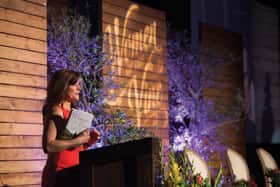 It’s been 10 years since Deborah Brenner wrote a book about the women who “make, taste and enjoy wine.” She titled it Women of the Vine: Inside the World of Women Who Make, Taste and Enjoy Wine.
It’s been 10 years since Deborah Brenner wrote a book about the women who “make, taste and enjoy wine.” She titled it Women of the Vine: Inside the World of Women Who Make, Taste and Enjoy Wine.The stories she was told by the women—who, by all accounts, were true pioneers—dealt with the struggles they encountered while “making it” in a male-dominated industry. Through the process of writing the book and championing its subjects, Brenner became inspired to enter the wine business herself, releasing wine from a first-of-its-kind collective of seven artisan women winemakers from Napa, Sonoma and Paso Robles. In the following seven years, she learned the business inside and out. Ultimately, however, all the money, blood, sweat and (a lot) of tears couldn’t foster women in the wine industry the way Brenner had hoped, which led her to shut down the Women of the Vine wine brand and return to the drawing board.
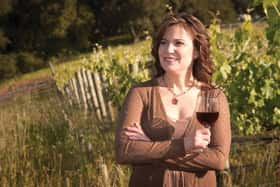 Still, women in the industry continued to reach out to her. “They were saying, ‘I’m a woman of the vine. Let me tell you about my mom, my sister and what we experience,’” Brenner says. What she came to realize is that women in the wine and beverage industry didn’t have a forum. So she gave them one. “Until now, there’s never been a forum for women to strengthen ties through opportunities such as regional networking events, discussion boards or educational resources,” she says.
Still, women in the industry continued to reach out to her. “They were saying, ‘I’m a woman of the vine. Let me tell you about my mom, my sister and what we experience,’” Brenner says. What she came to realize is that women in the wine and beverage industry didn’t have a forum. So she gave them one. “Until now, there’s never been a forum for women to strengthen ties through opportunities such as regional networking events, discussion boards or educational resources,” she says.Last year, on a “leap of faith,” Brenner organized the Women of the Vine Global Symposium, held in Napa at Meritage Resort and Spa. More than 500 women (and a few men) showed up for two days of networking and break-out sessions, “to really talk about how to foster their careers,” Brenner says.
“You could cut the energy with a knife,” she says. Feedback was so positive “that we realized we just can’t do this two and a half days of the year, we have to keep the momentum going. We let the genie out of the bottle and no one wanted to put it back in for the next 365 days.”
So Brenner, who lives in New York, organized a panel of advisors from all over the wine and spirits industry and, together last September, they launched Women of the Vine Alliance, which is the only organization of its kind to support and advance the careers of women in the alcoholic beverage industry.
Last month, it hosted its second global symposium, which, like its predecessor, sold out more than two months in advance—this time with more than 650 attendees and a wait list of more than 100.
Cart before the horse
“The symposium was the anchor before we created the trade organization, so you could say we put the cart before the horse,” Brenner says. The group is currently putting together tools to help women enhance and advance their careers, including job boards, networking opportunities, mentoring programs, educational courses and a directory. The directory is especially important, she says, because “you can actually contact people. To be able to contact some of these people and talk with them, ask advice and start discussions is just tremendous.”
Sonoma Valley’s Gundlach Bundschu Winery Director of Marketing Taylor Eason was one of the lucky ones who attended the conference last year. This year, she wasn’t as fortunate, as the event sold out before she got a chance to register.
“It was a well-executed event, especially considering it was its first year,” Eason says. “The speakers were impressive and thoughtfully chosen. I also found the quality of people who went to be top-notch, providing great networking opportunities.”
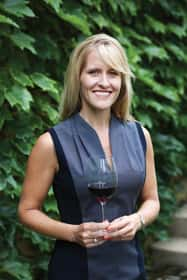 Lisa Mattson, director of marketing and communications for Jordan Vineyard & Winery in Healdsburg, was a first-time attendee this year and recently joined the organization itself.
Lisa Mattson, director of marketing and communications for Jordan Vineyard & Winery in Healdsburg, was a first-time attendee this year and recently joined the organization itself.“Because I’ve dedicated my whole career to wine, I feel it’s part of my duty to be a part of [this organization]. I want to engage with other women who have the same career passion and see how we can learn from each other and grow in our fields.”
NorthBay biz talked with Mattson before the conference, and she was particularly looking forward to the panel discussions, comprised of a Who’s Who of women in wine and spirits, and the networking.
“An organization like this is truly needed. The wine industry traditionally is known to be slower to evolve. That’s why the conference has been so smashingly successful, selling out its first two years. There is nothing out there like this,” Mattson says. “What Deborah has done is smart. It’s a good price point and she’s focused on getting good sponsors.”
Strength in numbers
 Violet Grgich, vice president of Grgich Hills Estate in Rutherford and one of the panelists at this year’s symposium, believes Women of the Vine to be “a great organization that combines talented people working together to enhance women’s careers and educate more women. By working together with everyone in the wine business, it makes us stronger—and it makes the wine industry stronger.”
Violet Grgich, vice president of Grgich Hills Estate in Rutherford and one of the panelists at this year’s symposium, believes Women of the Vine to be “a great organization that combines talented people working together to enhance women’s careers and educate more women. By working together with everyone in the wine business, it makes us stronger—and it makes the wine industry stronger.”Grgich reflects on how things have changed over the years for women in the beverage industry. She grew up in the business, the only child of the legendary Miljenko “Mike” Grgich, one of the world’s most famous winemakers, who made the 1973 Chateau Montelena Chardonnay that won the 1976 Judgment of Paris, beating the best of the French white burgundies and outscoring all other wines, both white and red.
“I’ve been around for a while and I’ve seen quite a bit. I’ve always looked at myself as an individual first, not male or female, but I do remember, when I was a child, that there were a lot less women than men working at the wineries,” Grgich explains.
“I remember when my dad hired Zelma Long as his assistant winemaker when he was working at Robert Mondavi Winery. That was in 1970, and she was one of the very first women winemakers. My dad didn’t think there was anything different about her [because she was a woman]—he just thought she was very talented. Back then, men made most of the decisions and women were seen, in general, as maybe not so qualified,” Grgich continues.
When she attended UC Davis, Grgich majored in music and took additional classesin enology and viticulture (as well as Latin and philosophy). When she graduated, her first job in the wine business was in 1977, in the laboratory at Grgich Hills Estate, which her father founded, along with Austin Hills and his sister, Mary Lee Strebl.
“I didn’t get into sales until later in life [in the 1990s]. But when I did, I noticed the same thing—the idea that men were smart and business-oriented, and women succeed because they were good-looking,” Grgich laughs. And while things have progressed, “Personally, I think women can do all men can do, plus a heck of a lot more. There are many folk tales—not just Croatian ones—of women and men switching responsibilities, and they always end up with women doing everything better than the men in less time, and the men not being able to do most of what the women do. The bottom line, for me, is that it’s more about the individual than whether they’re male or female.”
The importance of mentoring
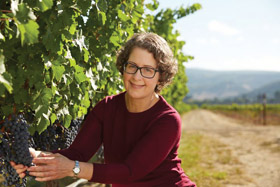 Janet Myers, general manager and director of winemaking for Franciscan Estate in St. Helena and Mount Veeder Winery in Napa, both owned by Constellation Brands, was a featured panelist at this year’s symposium. She focused her talk on what Constellation is doing to mentor and promote women. Approximately one-third of Constellation’s workforce is female.
Janet Myers, general manager and director of winemaking for Franciscan Estate in St. Helena and Mount Veeder Winery in Napa, both owned by Constellation Brands, was a featured panelist at this year’s symposium. She focused her talk on what Constellation is doing to mentor and promote women. Approximately one-third of Constellation’s workforce is female.“Along with a program called Managing for High Performance given to all of our developing managers, we also have a program called Women’s Leadership Network at Constellation, which has been in existence for three years. Our goal is to build talent, create a supportive network and bring formal development and training programs to women. It covers everything—how to coach, motivate, delegate, communicate and have difficult conversations,” Myers says. “Assertiveness and related skills may not come as easily for women and we want to develop them. And we have support from the highest level in the company. It’s very exciting.”
Constellation was one of the symposium sponsors this year and sent 60 women to the conference. While Constellation has a dedicated resource in the area, Myers thinks Women of the Vine truly fills a void for smaller wineries and their female employees.
“We have an accessible formal program, but smaller wineries don’t have the resources to do what we do,” Myers explains. “Women of the Vine provides smaller wineries the access that they may not have available in-house.”
Like Grgich, Myers has witnessed change in the 21 years she’s been in the industry.
“There are more women in leadership roles. I now have female winemaking peers in director positions that weren’t as prevalent in my earlier industry years. In my professional experience, I’ve always felt supported and treated fairly. I’ve been fortunate to have supportive male supervisors. The goal is to get the job done, and whoever can help get the job done, that’s who gets the opportunity,” she says.
She also notices a change in young men coming into the industry. “They don’t blink an eye at a female manager. There’s a more equal feeling between young women and young men. To them, it’s not unusual having a female boss. That’s a shift from the past,” Myers says.
That’s the spirit
While the name “Women of the Vine” connotes an association with wine, the organization is dedicated to reaching out to all women in the beverage alcohol industry—from cork suppliers, bottle manufacturers, and packaging experts to still makers, distillers and public relations professionals. If you work in the industry or for one of its associated suppliers, you belong.
Rebecca Running is vice president of national accounts for Infinium Spirits, headquartered in Southern California and part of Young’s Holdings. A speaker at both of the first two forums, Running also sits on Women of the Vine’s advisory board.
“In my experience, women have been steadily moving up the ranks over the years. Now more and more women are leaders, with titles like president, general counsel, head of sales and marketing divisions and winemakers,” she says. Women of the Vine is relevant because “it pulls women together to brainstorm, problem solve and career map,” no matter whether they are in spirits, wine, packaging or growing grapes and hops.
“It’s taken a while to get here, but now that we have, the growth [of the organization] is faster than we ever imagined. The conference is bigger than last year—and tickets sold out fast!” she exclaims.
And as for the name of the organization, despite having roots in the spirits business, Running thinks Women of the Vine is quite appropriate.
“I see the vine,” she explains, “as the one thing that connects us all. I see the vine as all of us collaborating together and working together for opportunities for the next generation.”
Spirit Works Distillery
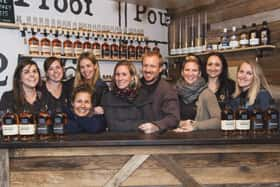 While times are changing in the traditionally male-dominated spirits industry and more women are moving into executive and leadership positions in the larger companies, younger people have discovered that the age-old adage, “If you can’t beat them, join them,” is a sound advice for cracking one last glass ceiling.
While times are changing in the traditionally male-dominated spirits industry and more women are moving into executive and leadership positions in the larger companies, younger people have discovered that the age-old adage, “If you can’t beat them, join them,” is a sound advice for cracking one last glass ceiling.And that’s exactly what Ashby and Timo Marshall did.
Co-founders of Spirit Works Distillery in Sebastopol, the duo has been making craft spirits – vodka, gin, barrel gin, wheat whiskey, straight rye whiskey, sloe gin and barrel reserve sloe gin – since 2012, with the first product actually hitting the market about three years ago.
And, with the exception of Timo, the entire production staff is…female!
“It wasn’t planned that way, it just happened,” explains Jessica Shumaker, marketing manager. “It turned out that the person best qualified (to fill a job position) was always female.”
Ashby is the head distiller, “not the master distiller, which is a bit of a sexist title anyway,” says Timo. She’s assisted by Shumaker, Lauren Patz (production manager and distiller), Lisa Cunningham (sales manager), Krisztina Lazar (Northern California market manager), Emily Robin (tasting room and production associate) and Nikki Lucas (apprentice distiller/production manager). Timo, who simply lists himself as co-founder but can be found doing just about everything throughout the distillery; Bandit, the couple’s female Boston Terrier, is officially in charge of security.
Patz actually hails from a wine background—her parents, Heather and Donald Patz, are co-owners of Patz & Hall Winery. She spent some time at the winery growing up and also worked in a chocolate factory. She was intrigued when she saw Spirit Works’ ad for a tasting room associate and apprentice distiller.
“I said to myself, ‘Well, why not?’ It was an opportunity you don’t always get in established companies, and the interest in spirits is definitely growing,” she points out. “The thing I really love is that we have an engaged, interested community (of consumers). Spirits have been a mystery for so long. Nine times out of ten, our visitors tell us it’s the first time they have every been in a distillery.”
Timo says working with an all female staff “is just like it is to work with any group of competent people. Everyone here is extremely knowledgeable and we’ve been able to create a real family work environment.”
Does he consider himself the proverbial “thorn among the roses?”
“Nooooo,” he says, laughing, “I’m the rose among the thorns!”
Spirited Women
Many think women are “new” to the wine and spirits business, but a quick look at the history of the industry proves otherwise. Here are some interesting facts we gleaned from our research, compliments of Google and The Atlantic Magazine, with additional help from Fred Minnick, who wrote the book Whiskey Women.
• Women invented beer around 4,000 B.C. They fermented barley to make the beverage.
• In the Fourth Century, Maria Hebraea, an alchemist, was credited with building an early distilling apparatus, which today is known as the alembic still.
• Women made distilled spirits in Western Europe during the Medieval Era, until they were “stripped of basic rights, barred from reading and studying math or science,” according to Minnick.
• Beginning around 1200 AD, women began running apothecaries as demand for distilled medicines increased. They made distilled beer, wine or spirits—called aqua vitae—for medicinal purposes.
• In the 1500s, women selling aqua vitae were often accused of being witches. If, perchance, a patient drinking aqua vitae perished, the woman could be charged with witchcraft and sentenced to death.
• In the 1700s, American women were distilling at home. Minnick’s research found an early form of dating sites in old newspapers, where men would take out ads for wives and many times specify a preference for women who could brew beer or distill spirits.
• In the 1850s, prostitutes could legally sell whiskey and reap profits for their brothels. According to Minnick, during a single year in New York City, women made more than $2 million in liquor sales, pretty close to the $3 million they made from prostitution.
• During Prohibition (1920-1933) women played a significant role in bootlegging. Men would make sure they were in the car because they couldn’t be searched by police (it was rude, and searching a woman driving alone was illegal). So women hid flasks in their dresses, drove trucks filled with liquor and ran bootlegging operations. Minnick says at one point, “female bootleggers outsold men five sales to one.”
• Women were leaders in ending Prohibition. The Women’s Organization for National Prohibition Reform was started by Pauline Morton Sabin in 1929.
• After Prohibition, distilled spirits weren’t marketed toward women because of its association with prostitution. In 1987, the Distilled Spirits Council of the United States lifted a ban on advertising directly to women, but it took three years until Crown Royal broke the tradition by running a television spot that targeted women.
• In 1957, Marjorie Samuels came up with a design concept for her husband’s Maker’s Mark bourbon. It was a bottle dipped in thick, red wax with a hand-torn label and a classic font that simply said “whisky.” Husband Bill was not amused, but Marjorie won the argument because she reminded him that she’d finished first in their class at the University of Louisville—and he’d finished last. To this day, Mrs. Samuels is considered to be “the mother of Maker’s Mark,” and the person who revolutionized the packaging and marketing of distilled liquor.
• Today, women make up nearly 37 percent of whiskey drinkers. According to International Wine and Spirit Research, Americans drank 24 million cases of domestically produced whiskey in 2013, a 30 percent increase from 10 years earlier. Women were largely responsible for that growth.
We’ll drink to that!
Women for Wine Sense
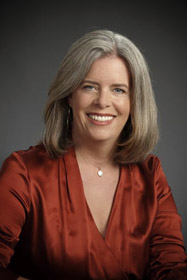 Back in 1990, two pioneering wine women—Julie Johnson (Frog’s Leap, Tres Sabores) and Michaela Rodeno (Domaine Chandon, St. Supery)—were approached by their children, who asked them, “Why are you making drugs?”
Back in 1990, two pioneering wine women—Julie Johnson (Frog’s Leap, Tres Sabores) and Michaela Rodeno (Domaine Chandon, St. Supery)—were approached by their children, who asked them, “Why are you making drugs?”Appalled at the idea their children weren’t getting balanced information, the two formed Women for WineSense (WWS), a nonprofit organization that set out to educate women wine consumers about moderate wine consumption and its benefits in a healthy lifestyle, plus the need for balanced information on wine bottle warning labels. Twenty-six years later, with 11 chapters across the United States (the founding Napa and Sonoma Chapter is still the largest) and membership well over 1,000 (men and women), the organization continues the quest.
“Originally, it was about defending wine form an anti-alcohol campaign,” says Karla Barber of Dallas, Tex., the current national president of WWS. And it worked. In 1993, just three short years into its run, WWS succeeded in getting Congress to declare “Wine Appreciation Week.”
“They felt they had achieved their mission by 1994,” Barber explains, “so they drafted a strategic plan to continue as an organization to support women’s career development in the wine industry through networking, mentoring and education. I still think today that [WWS] provides a unique value by bringing together women—and some men—in the industry, joining them with people who are enthusiastic about wine, but not in the industry.”
Every other year, WWS holds a national “Grand Event” conference where the focus is on wine and wine-related education, such as communication skills, specific wine region education and the elements of food and wine pairings. It’s also an opportunity for the organization to recognize accomplishment with Rising Star, Lifetime Achievement and Hall of Fame awards. Last year, it was held in Napa and Sonoma to celebrate the organization’s 25th anniversary. The next one will be in 2017 in New York’s Finger Lakes Appellation.



